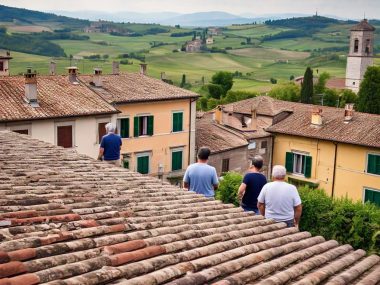Introduction
Denmark, renowned for its maritime heritage and commitment to sustainable practices, is currently experiencing an urgent need for fish farmers. The demand stems from a combination of factors, including the growing global appetite for seafood, the drive for sustainable aquaculture, and the need to support local economies. This article explores the multifaceted aspects of the fish farming industry in Denmark, examining current trends, challenges, opportunities, and the critical role fish farmers play in maintaining Denmark’s position as a leader in sustainable seafood production.
The Danish Aquaculture Landscape
A Tradition of Maritime Excellence
Denmark has a long-standing tradition of fishing and aquaculture, deeply embedded in its culture and economy. The country’s extensive coastlines, fjords, and ideal climatic conditions create a perfect environment for fish farming. The industry not only provides fresh and high-quality seafood to both domestic and international markets but also plays a significant role in conserving marine ecosystems through responsible aquaculture practices.
Key Species Farmed
Danish fish farms primarily focus on several key species, including:
- Rainbow Trout: Known for its resilience and adaptability to various farming conditions, rainbow trout is a staple of Danish aquaculture.
- Atlantic Salmon: Farmed primarily in seawater cages, Atlantic salmon is highly valued for its taste and nutritional benefits.
- European Eel: Although facing challenges due to overfishing and environmental changes, eel farming continues to be part of Denmark’s aquaculture efforts.
- Mussels and Shellfish: Mussel farming, in particular, contributes to Denmark’s reputation for producing sustainable seafood, with environmentally friendly farming methods that help maintain water quality.
The Growing Demand for Fish Farmers
Expanding Global Seafood Market
The global seafood market is experiencing robust growth, driven by increasing health consciousness among consumers and a rising preference for protein-rich diets. As a result, the demand for sustainably farmed fish and seafood continues to rise. Denmark, with its stringent quality standards and commitment to sustainability, is well-positioned to capitalize on this trend. However, to meet the growing demand, there is an urgent need for skilled fish farmers.
Sustainable Practices and Certification
Sustainability is at the forefront of Denmark’s aquaculture industry. The country adheres to rigorous environmental regulations and promotes practices that minimize ecological impact. Certified fish farms, adhering to standards set by organizations like the Aquaculture Stewardship Council (ASC), ensure that the seafood produced is not only high in quality but also environmentally responsible. The need for fish farmers who can implement and maintain these sustainable practices is therefore critical.
Technological Advancements
The aquaculture sector is rapidly evolving with technological advancements that enhance productivity and sustainability. Innovations such as automated feeding systems, underwater drones, and data analytics for monitoring water quality are transforming fish farming operations. Skilled fish farmers who can leverage these technologies are in high demand to optimize production and ensure sustainable practices.
Challenges Facing the Industry
Labor Shortages
One of the primary challenges facing the Danish aquaculture industry is the shortage of skilled labor. Several factors contribute to this issue:
- Aging Workforce: A significant proportion of the current workforce is nearing retirement, leading to a gap in experienced personnel.
- Perception of the Profession: Fish farming is often perceived as a physically demanding and less glamorous job, deterring potential entrants.
- Rural Locations: Many fish farms are located in rural areas, making it difficult to attract workers who prefer urban living.
Regulatory Compliance
The aquaculture industry in Denmark is subject to stringent regulations aimed at ensuring environmental sustainability and consumer safety. While these regulations are essential for maintaining high standards, they can also pose challenges for fish farmers in terms of compliance and operational costs.
Climate Change and Environmental Factors
Climate change and environmental factors, such as water temperature fluctuations and pollution, pose significant challenges to fish farming. Adaptation strategies and innovative solutions are required to mitigate these impacts and ensure the resilience of aquaculture operations.
Opportunities for Fish Farmers
Competitive Salaries and Benefits
In response to labor shortages, many aquaculture companies in Denmark are offering competitive salaries and benefits to attract and retain skilled workers. These benefits may include housing allowances, health insurance, retirement plans, and performance bonuses.
Career Advancement
The aquaculture industry offers clear pathways for career advancement. Entry-level positions, such as farm workers and technicians, provide hands-on experience and opportunities for skill development. With experience and further training, individuals can advance to supervisory and managerial roles, enhancing their earning potential and career satisfaction.
Technological Skill Development
Embracing technological advancements in aquaculture offers exciting opportunities for professional growth. Fish farmers who develop expertise in using automated feeding systems, remote monitoring tools, and data analytics will be well-positioned to lead the industry’s future.
Contribution to Sustainability
Working in the Danish aquaculture industry allows individuals to contribute to global sustainability efforts. By producing high-quality, responsibly farmed seafood, fish farmers play a vital role in conserving marine ecosystems, reducing overfishing, and providing healthy food options to consumers around the world.
Government and Industry Initiatives
Training and Education Programs
To address labor shortages and skill gaps, various training and education programs are being implemented:
- Vocational Training: Specialized vocational programs provide practical, hands-on training in aquaculture techniques and technologies.
- Partnerships with Educational Institutions: Collaborations between aquaculture companies and educational institutions aim to integrate aquaculture courses into the curriculum, attracting young talent to the industry.
- Apprenticeships and Internships: Apprenticeship and internship programs offer real-world experience and mentorship opportunities, helping individuals develop the skills needed for successful careers in aquaculture.
Financial Incentives
The Danish government and industry organizations offer financial incentives to support fish farming operations and attract new talent:
- Grants and Subsidies: Financial grants and subsidies are available to support the establishment and expansion of fish farms, as well as the adoption of sustainable practices.
- Tax Benefits: Tax incentives for aquaculture investments help reduce operational costs and increase profitability for fish farmers.
- Loan Programs: Low-interest loan programs provide financial assistance for purchasing equipment, upgrading facilities, and implementing innovative technologies.
Promotion of Aquaculture Careers
Efforts are being made to promote aquaculture careers and improve the perception of the profession:
- Awareness Campaigns: Public awareness campaigns highlight the importance of sustainable aquaculture and the rewarding career opportunities available in the industry.
- Industry Events and Conferences: Industry events and conferences provide platforms for networking, knowledge sharing, and showcasing advancements in aquaculture practices and technologies.
Success Stories and Case Studies
Innovative Fish Farming Practices
Several Danish fish farms have gained recognition for their innovative and sustainable practices:
- Recirculating Aquaculture Systems (RAS): RAS technology enables efficient water usage and waste management, reducing the environmental impact of fish farming. Successful implementation of RAS systems in Denmark has set a benchmark for sustainable aquaculture worldwide.
- Integrated Multi-Trophic Aquaculture (IMTA): IMTA practices involve farming multiple species together, such as fish, shellfish, and seaweed, to create a balanced and sustainable ecosystem. This approach has been successfully adopted by some Danish farms, enhancing both productivity and environmental sustainability.
Career Journeys of Successful Fish Farmers
Profiles of successful fish farmers who have built thriving careers in the Danish aquaculture industry serve as inspiration:
- From Farm Worker to Manager: Case studies of individuals who started as entry-level farm workers and advanced to managerial positions highlight the potential for career growth in the industry.
- Entrepreneurial Success: Stories of fish farmers who started their own aquaculture ventures and achieved entrepreneurial success demonstrate the opportunities for innovation and business development in the sector.
The Future of Fish Farming in Denmark
Embracing Innovation
The future of fish farming in Denmark lies in embracing innovation. Continued investment in research and development, coupled with the adoption of cutting-edge technologies, will drive the industry’s growth and sustainability. Collaboration between government, industry, and academia will be essential in fostering a culture of innovation and excellence.
Strengthening Global Position
Denmark’s commitment to sustainable aquaculture and high-quality seafood production positions it as a global leader in the industry. By addressing labor shortages, enhancing skill development, and promoting the benefits of aquaculture careers, Denmark can strengthen its position in the international market and meet the growing demand for responsibly farmed seafood.
Promoting Youth Engagement
Engaging the younger generation in aquaculture is vital for the industry’s long-term success. By incorporating aquaculture education into school curriculums, organizing outreach programs, and offering internships and apprenticeships, Denmark can inspire and attract young talent to pursue rewarding careers in fish farming.
Conclusion
The urgent need for fish farmers in Denmark presents both challenges and opportunities. The country’s rich maritime heritage, commitment to sustainability, and expanding global seafood market create a dynamic environment for the aquaculture industry. Addressing labor shortages through training programs, financial incentives, and promotion of careers in aquaculture will be crucial in ensuring the industry’s growth and resilience.
For job seekers, the Danish aquaculture industry offers competitive salaries, career advancement, technological skill development, and the opportunity to contribute to global sustainability efforts. By embracing innovation, engaging youth, and fostering a positive perception of the profession, Denmark can secure its position as a leader in sustainable fish farming and meet the growing demand for high-quality, responsibly farmed seafood.




